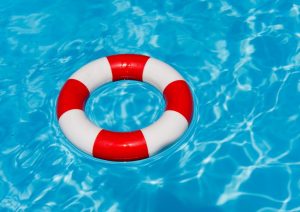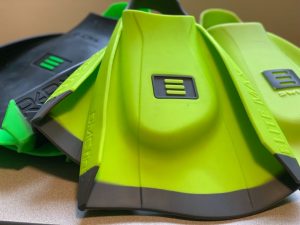
7 Best Swim Snorkels for Better Technique and Faster Swimming
Ready to throw down on a new swimmer’s snorkel? Here are reviews of the best swim snorkels for lap swimming.

Looking for information on how to drain an above ground pool? Follow the simple steps in this guide and do it right the first time.
Ah, it’s that time of the season…
When you need to drain your above-ground pool.
A seemingly simple task that can cause some unsuspectingly big problems.
While there are a few different ways to accomplish this seemingly task (after all, what could be easier than spilling water out of an over-sized bucket?), there are some best practices.
In this guide, we are going to look at some simple tips for draining your above ground pool that will help you get it done efficiently and without damaging the pool liner, the pool equipment, or water-logging your lawn (or worse, flooding your neighbor’s basement).
Let’s get right into it.
We all take a reasonable amount of pride in the landscaping of our yards, so there’s no sense launching a mini tsunami at the grass, shrubs, and even your house, am I right?
Pools can be deceptive in how much water they hold, and how quickly all that water can overwhelm the yard.
Figure out where the water is going to get drained so that the water—laden with chlorine—doesn’t end burning a path through your plants and grass.
If you want to bypass the yard and empty your pool into the sewer, quickly check with your local municipality about whether they permit water dumping into storm drains and sewers.
Submerging a garden hose is the cheap and easy way to get the job of draining your above ground swim pool completed.
This is the slowest method, but I like it as it gives your yard and the surrounding area time to absorb the water without getting overly saturated.
Other tools include using an electric pump. If you have one on hand, use it, but purchasing one specifically for this purpose (unless you have a huge above-ground pool) is probably overkill.
That said, electric pumps do have their benefits and uses, especially if you are doing a lining change or want to really get at those last couple of inches of water at the bottom of the pool.
Okay, now that we are tooled up and have our drainage tool of choice in hand, and we have a clear idea of where the water is going to go, it’s time to commence the draining!
For the garden hose, completely submerge it into the pool, letting it fill completely with water.
Tip: For many above-ground pools, water is what helps it keep its shape. As you drain the water, the walls will start to collapse. For this reason, you should drain your pool when there aren’t high winds or lousy weather that will blow the sides around and damage the liner.
Once that is done, grab one end and place it on the ground, aiming where you want the water to drain.
(You can speed this up by using multiple garden hoses, too.)
With the pump, you are going to follow the owner’s manual on this one as each has their own steps.
Follow the instructions, point the outlet hose where you want to drain the water, and you are in business.
Clean up on aisle seven!
One of the challenges you will run into when draining an above ground pool with a garden hose is that the last couple inches of water will be tough to get at.
Fortunately, most pools of this type have a drainage outlet that you can use to remove water. It’s simply a matter of angling the drainage plug in a way that the last of the water drains.
If you are using an electric pump, this won’t be an issue as that bad boy will suck up just about every last drop.
Whether you are doing some repair work to the liner, or you are packing up the pool for the winter, this last step is crucial.
Let the pool walls and bottom fully dry out.
The last thing you want to do is pack away a soggy pool and let bacteria and algae fester and multiply. This will result in a lot of extra work when you reopen the pool next season.
Drying out the pool can be accomplished via air drying and the sun, but if you go the au naturel approach, be sure to avoid extreme heat and sun as this will do damage to your pool liner.
Wet-dry vacuums are a handy tool for completing the drying process as well.
If your goal with draining the pool was pool chemical-related, or you are simply replacing the water in the pool, you can (hopefully, obviously) skip this step altogether.
Closing your above-ground pool for the winter?
Let’s store that thing properly so that it is clean and ready for action when the weather warms up again.
That starts with taking down the pool and drying it completely. Soggy liner will mold, and the best way to protect the liner is using towels, a dry vac or your unrelenting hot breath (just kidding) to completely dry it out before storing.
Fold it up, place it in its original packing (if you still have it) or a large Rubbermaid container that you can seal and pack away easily.
There are a lot of different scenarios for why this task needs to be done.
And although it can seem like a quick fix, it’s not always the preferred course of action.
Here are some of the more common scenarios where pool owners are looking to drain their little watering hole:
⭐ Pool liner replacement.
Let’s just admit that it’s impossible to replace the lining on an above-ground pool without dumping the water out.
While there are some underwater kits for patching the liner, if you are doing a full rebuild on the liner, you’re gonna have to drain the pool to get at it.
⭐ Replacing the water when cleaning it doesn’t work anymore.
More often than not, new pool owners will seek to dump the pool water in an effort to replace it with clean pool water.
While there are some scenarios where this is necessary (and these are usually more extreme situations and this is specifically when total dissolved solids have reached a level so high that even pool shock is not enough to shock it into submission), if the water is dirty, this is a cleaning and maintenance issue and should be resolved through proper pool chemistry and filtration.
Make sure that you are using the right amount of chlorine tablets, testing the water (whether with a pool strip test kit or a fancy-pants digital pool test kit), and that the pool pump and filter is working optimally.
(Additionally, here are some more tips for cleaning and maintaining your above-ground pool.)
⭐ Moving the pool.
Unless you are Superman, moving a 10ft by 30ft pool full of water isn’t going to happen. (And he’d have a hard time keeping the bottom of the pool flat to avoid spilling water over the edges.)
Moving an above-ground pool happens for a variety of reasons—you want more sun, more shade, less tree debris falling into the water—and draining the pool is a good idea in this case.
⭐ Shutting it down for the winter.
While above-ground pools are relatively sturdy, they shouldn’t be left outdoors during the winter, particularly in chilly climates.
Draining the pool at the end of the summer is a step in winterizing and storing your above-ground pool.
A submersible electric pump is the fastest way to clear water from the pool. The most powerful pumps can clear water at a rate of 15 gallons per minute.
Although it won’t drain ALL of the water from the pool—you will still need to manually drain the final few inches of water that can’t be fed into the pump—it will do the heavy lifting the fastest.
This depends on the size of your swim pool and the method you employ to drain the water.
Electric water pumps range in power (from 1/2 horsepower to 1 HP) can pump from 10-15 gallons per minute.
Take the volume of your swimming pool and divide it by 10 and you will have a good estimate of how long it will take to drain.
Generally, you are looking at a timeframe of 5-10 hours depending on how big or small your above-ground pool is.
Using a garden hose will extend this time frame.
There’s no hard rule for the frequency of draining your above ground pool.
As long as you stay on top of the pool chemistry, manage the free/combined chlorine totals, and let the pump and filter do their thing, you won’t have to drain the pool except for in special circumstances.
These would include closing the pool for the season, replacing the pool liner, and so on.
Pool owners will often drain their pool just to keep the pool cool during really hot stretches of weather, but there are far more economical ways to keep the pool water cool and sparing yourself the work and cost of constantly refilling and rebalancing the pool water.
Pool pumps, whether we are talking about a standard pool pump or a variable speed pool pump, are not designed to be submerged in the water.
You risk significantly damaging your pool pump and filter by sinking them into the water. Always use either a submergible electric water pump or go the manual route with a garden hose to drain water from your pool.
Draining an above ground pool should generally only be done at the end of the season, in the event of a big repair, or when even shocking the water isn’t cleaning the pool anymore (this is typically because the level of total dissolved solids is so high that even chlorine can’t bust through anymore).
But the rest of the time, whether we are talking about warmer pool water, or cloudy pool water, the most cost-effective course of action is checking off your to-do list with balancing the water and keeping the filter and pump in tip-top shape.
Whether you want to invest in a submersible electric water pump, or go the slower route of using a garden hose, you’ve got what you need to drain your pool with confidence.
7 Best Accessories for Your Above Ground Pool. Level up your above-ground swimming pool with our favorite accessories for maximum fun and utility.
6 Best Above Ground Pool Filters. Keep your above ground pool sparkling and clean with our hand-picked reviews of the best above ground pool filters.
Subscribe to the YourSwimLog.com newsletter and get tips and advice on how to swim faster every weekday morning, straight to your inbox.
Join 33,000+ swimmers, coaches, and swim parents learning what it takes to swim like a boss.
Unsubscribe anytime. Email will never be shared or sold.

Olivier Poirier-Leroy Olivier Poirier-Leroy is the founder of YourSwimLog.com. He is an author, former national level swimmer, two-time Olympic Trials qualifier, and swim coach.

Ready to throw down on a new swimmer’s snorkel? Here are reviews of the best swim snorkels for lap swimming.

Looking to get some new swim gear on a budget? Shop the best Black Friday deals for swimmers in this exclusive guide.

Looking for the best swimming app to maximize your time and effort in the water? Here’s a look at the top swim apps for conquering your swim workouts.

Wondering how often you should be testing the water in your pool or spa? Here’s a detailed look at how frequently you should test your pool. Your swimming pool and spa relies on being properly balanced to keep the water clean and safe for swimming. As a pool owner, you

Fed up with the effects and smell of chlorine in your hair after swimming? Here is how to remove chlorine from your hair once and for all.

The DMC Elite fins are high-performance training fins for competitive swimmers. Here’s a review of why these fins are flat-out awesome.

LANE 6 PUBLISHING © 2012-2024 · PRIVACY POLICY · RETURN POLICY · TERMS OF SERVICE · AFFILIATE DISCLOSURE